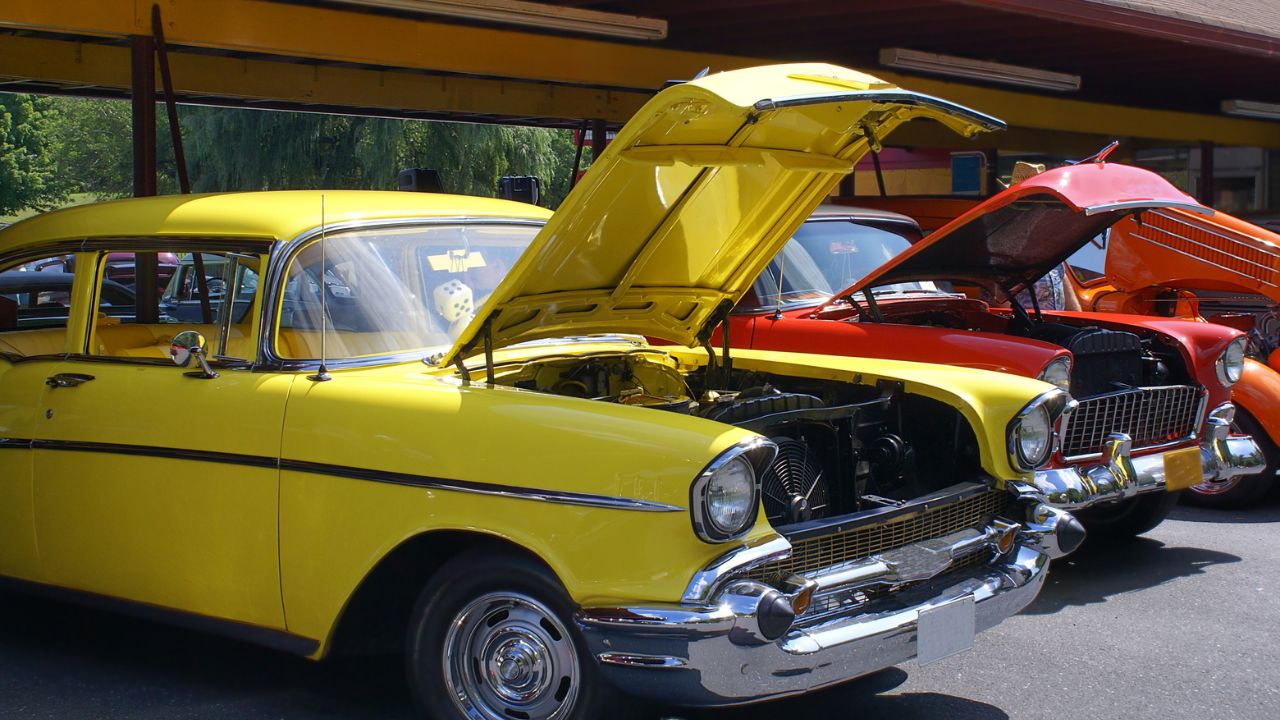
The Shelby Mustang was designed for speed and style, not family fun. This car was an excellent performer in this area. The many variations of the Shelby Mustang encouraged faster speeds, as well as more cool designs. It was a classic because of its styling and performance. This car is the best. Here are a few. Let's get started with the design. The Mustang was a hot hatch, built for speed and style. While it wasn't designed for comfort or family fun, the Mustang was certainly an enjoyable ride.
Lamborghini Miura
A Lamborghini Miura is a great choice if you love vintage cars. The 1966-71 production of the Miura saw it become one of the most innovative supercars. It was the first ever mid-engined supercar. This supercar was very popular with Maserati, Ferrari, and other luxury car companies. In 1982, however, the factory didn't officially approve the car.

Audi TT
You can find a lot of good examples for less than PS4,000 when you are looking to buy an Audi TT classic car. It is important to ensure that the car you are purchasing is authentic. Otherwise, it could prove to be a poor investment. A good TT looks fantastic and has a timeless, distinctive design that is its main selling point. There are also some models that have been stripped of parts and turned into spares.
Mercedes SL series
Mercedes-Benz's SL series cars are considered a classic. It was first manufactured in 1963 and has been produced for around 20 years. Later, the body style was changed to a fixed-roof coupe known as the SLC-Class. This body style sold more than 70% of the company’s production until 1981. These cars became status symbols for wealthy old people as well as young urban professionals.
Porsche 924
The Porsche 924 was built between 1976 and 1988. At first, the Porsche 924 wasn't called a Porsche. VW was involved in the design of the car. It was powered jointly by Audi and VW engines. It was designed to be an affordable option for sports coupe purchasers. The Porsche 924 was the very first Porsche model to be equipped with five-speed transmissions. However, as the car grew older, its value began to decline for many reasons.
Jaguar XJS
The Jaguar XJS is a grand touring icon that has long been a favorite of many buyers. The XJS is an exceptional value car with less than 1000 cars registered in the UK. The XJS is a pleasure to drive and a great investment. If you don't plan to work hard on the XJS, however, it is a great car to own. However, it is possible to find a good example that has been well maintained.

Volvo 1800 ES
Volvo made the Volvo 1800, a sport car in the late 1960s. Pietro Frua created the P1800 from an Italian design. Jensen assemble it. It was made in Pressed Steel England. The car is regarded as one of America's greatest classic cars. The 1800 is still one of the most popular classic cars. If you are looking for a classic car that you can drive on weekends, the ES might be for you.
FAQ
How can I fix my car as a hobby?
It's a great hobby to take on if you are passionate about cars. You can repair them, buy their parts, sell them, or just have fun with them. This would be a wonderful hobby if you're looking to find something completely different.
However, it's not easy to turn this into a full-time career. It takes a lot of dedication and hard work. It requires a lot investment.
You may not be able to have an emotional connection with cars unless there is a valid reason.
What qualifications do you need to be a mechanic?
To become a technician, you will need to pass a series exams. These exams include:
-
A general knowledge test
-
Practical exam
-
An apprenticeship test
These tests are designed for you to understand the basic concepts and principles of mechanics before your start as a technician.
Once you pass these tests you can become a mechanic. You'll still need an apprenticeship. This will require you to learn the trade.
To fully understand the mechanics of vehicle repairs, you'll need workshops and classes. Additionally, you will need to work with experienced mechanics.
A mechanic must be highly focused and attentive to detail in order to succeed. It is essential to pay attention to all aspects of vehicle repairs.
To be a successful mechanic, you will need patience and perseverance. If you don’t enjoy following instructions, this might not be the right career path.
However, if you love cars or enjoy working on them, you might be happy in this field.
How do I prepare to be a mechanic apprentice?
It is important to have an understanding of what you are going into. It is important to know the basics of how cars work. This will help you to plan your first day in the garage.
You also need to know how to fix simple problems such as broken lights, tires, etc.
These lessons will help you to identify and fix problems.
To put the pieces back together, you will also need to understand how they fit together.
Finally, you need to be able to safely and efficiently use tools.
All these aspects will help you become a competent technician.
What is the length of an apprenticeship as an automotive mechanic?
An automotive mechanic apprenticeship takes around three years to complete. It includes two years of school and two years as an apprentice. The first year is used to learn all aspects of the trade including safety procedures and theory. You'll also learn how tools can be used safely and efficiently during this year. After you have completed the first year of training, you will be able to spend an additional year on-the job learning different trades. These years will offer you the opportunity to attend formal classes.
The last year of the program is dedicated to gaining certification and qualifications in the field. These include NVQs, which are obtained after passing industry-specific exams. The HNCs (Higher National Certificates), on the other hand, cover general subjects like customer service and management. City & Guilds certificates offer qualifications in certain trades.
Is it hard to get a job working as an auto mechanic?
Yes, it can be very easy. Many garages advertise their vacancies online, and many people apply just because they think it might be fun. You can apply for several places to see if they are accepting student applications if you want to get your foot in their door. You could also ask your family and friends if they know anyone in the industry. They might be willing to recommend someone.
Does it really matter what college I choose?
It's not true. There is no difference between colleges in terms of how to get into the automobile industry. But, there are better programs at some schools than others. Look elsewhere if you want something more niche.
What qualifications are required to become a truck mechanic
Although you don’t have formal qualifications, you have extensive experience with engines and trucks. You are a valuable asset as you can quickly diagnose and solve problems efficiently.
Also, your knowledge of diesel technology will be a benefit as you can help us understand which parts are needed for our vehicles.
Statistics
- According to the BLS, total auto technician employment is expected to exceed 705,000 by 2030. (uti.edu)
- 52% of Mechanics in the United States think their salaries are enough for the cost of living in their area. (indeed.com)
- Apprentice mechanics earn significantly less hourly than mechanics who have completed training, with a median wage of approximately $14.50 an hour, according to PayScale. (jobhero.com)
External Links
How To
How to properly diagnose your car for repair
First, look at the symptoms of your car to determine if it needs repair. You can then follow these steps for a proper diagnosis of your vehicle.
-
Check engine lights. Check the dashboard light indicators such as the engine light indicator, the oil pressure gauge, the battery light indicator, the coolant temperature gauge, and the RPM gauge. You may have a problem with your vehicle if any of the indicators are flashing for more than a few days.
-
Examine the treads of the tires. Tires with worn treads could cause problems when handling or braking. The treads of the wheels should be inspected as well. They should look clean and be smooth. To do this, remove the wheels and take them out. You can check the tread wear with a flashlight.
-
Check the level of brake fluid. You should always keep track of the amount of brake fluid in your vehicle. This helps ensure that your brakes operate properly. Your brakes may fail if the brake fluid level drops.
-
Check the suspension system. The suspension system in vehicles absorbs vibrations and shocks. It gives you better control and allows for smoother accelerations and decelerations. You might notice a wobbly feeling or uncontrollable shaking in your vehicle if it has a problem with its suspension. To determine whether your vehicle may have a suspension issue, you can try to put weight on the rear or front axle and watch the movement.
-
Examine the steering column. The steering column connects the steering wheel to all other components of the vehicle. Accidents often damage steering columns. It is recommended to replace any steering column that feels loose, or shakey.
-
Observe the exhaust pipes. The exhaust pipes transport gases from the combustion chamber to outside. Your cabin will be effected if your exhaust pipe cracks or leaks. Additionally, your tailpipe should be fixed immediately if it is bent.
-
Look under the hood. Look underneath your hood to see if anything looks strange. Your engine could be leaking fluids. If you smell something strange coming from your engine compartment you should call a professional technician.
-
Make sure to check the air filter. The air filter in your vehicle collects dirt and dust from the environment. Vehicles that have a dirty air filter will not run well. Replace your air filter regularly.
-
Check the fan belt. Your vehicle's fanbel connects the engine and transmission. If the fan belt fails, the engine won't start. It is easy to replace the belt. You only need a screwdriver or pliers to replace your belt.
-
The radiator hose and hoses should be checked. The radiator hose carries water from the radiator to the engine. It can become cracked or damaged and leak hot liquid onto your engine. Repairing the hose is easy with a pair of needlenose pliers or a small wire brush.
-
Check the windshield wipers. Windshield wipers work by using electricity to remove rain and snow. If they stop working, streaks could be left on your glass. Change the washer fluid to fix the problem.
-
Make sure you check the cables. The battery cables provide power for the electrical systems in your car. Always disconnect the negative wire before you replace batteries. Failure to do so can damage your alternator.
-
Pay attention to your headlights. Headlights are used to illuminate the road ahead. Bad visibility can be caused by headlights that don't work correctly. Check the bulbs to see if they've burned out.
-
Pay attention to the lights. If you approach other drivers at night, lights will warn them. If one doesn't work, it could distract you and lead to an accident.
-
Make sure you check your brakes. Brakes will reduce the speed of your car in case of an accident. You could lose control of the car and cause a crash if they don't work properly.
-
Change your oil. The oil keeps your engine well lubricated. This oil helps to prevent metal parts becoming too worn out. It is recommended that the oil be changed every other month.